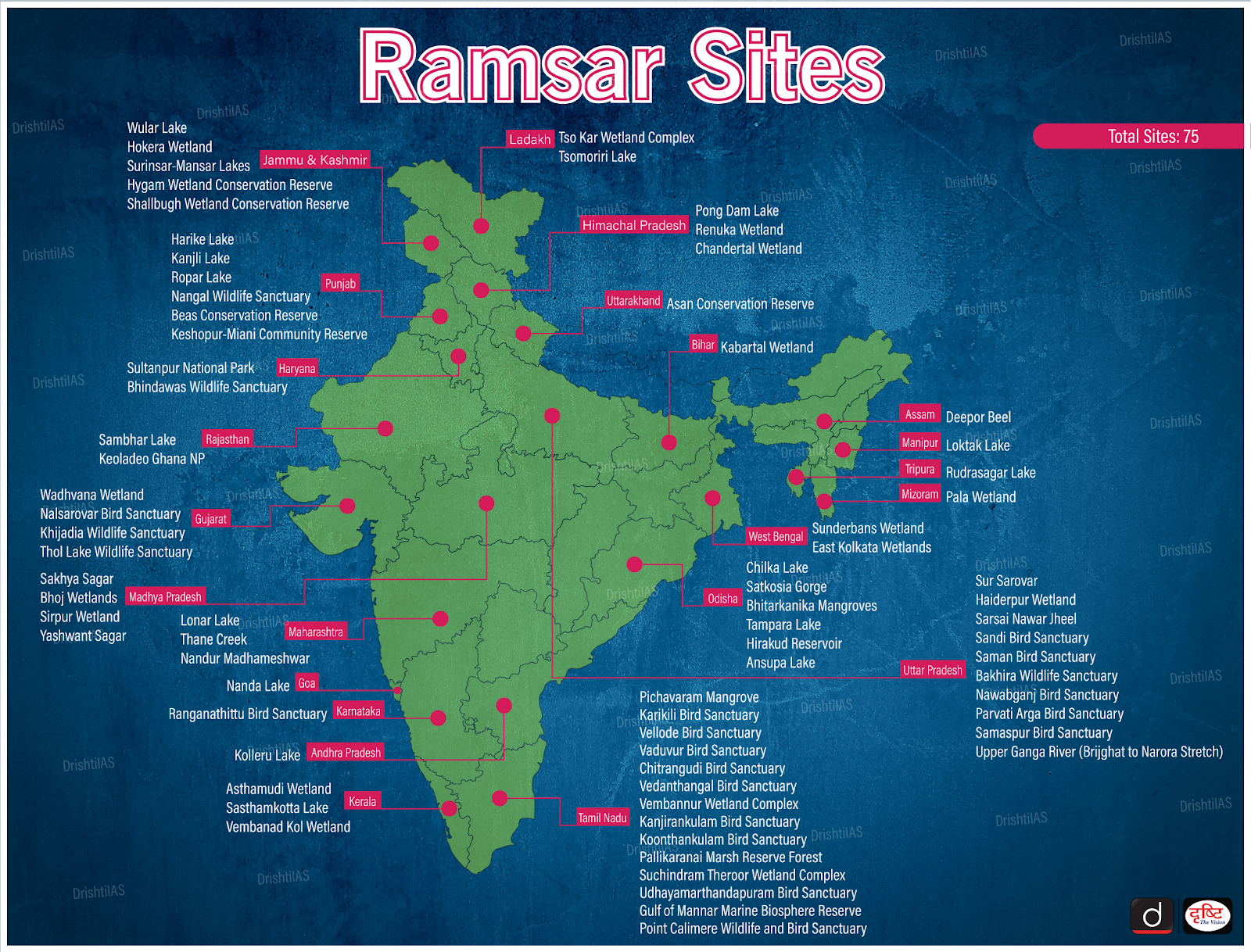Jammu & Kashmir Switch to Hindi
Hokersar Wetland
Why in News?
In recent years, a significant shortage of water caused by deficient rainfall at the Hokersar wetland in the Kashmir Valley has adversely affected the arrival of migratory bird populations in the area.
Key Points
- Hokersar Wetland:
- Location:
- The Hokersar wetland, a Ramsar site, is situated in Srinagar, Jammu and Kashmir. It is also known as the ‘Queen Wetland of Kashmir’.
- Geographic Setting:
- It is a natural, perennial wetland that is part of the Jhelum basin and is located in the northwest Himalayan biogeographic province of Kashmir, at the foot of the snow-draped Pir Panchal range.
- Water Source:
- The wetland receives water from the Doodhganga River, a tributary of the Jhelum.
- Flora and Fauna:
- It is home to the last remaining reedbeds of Kashmir and serves as a critical pathway for 68 waterfowl species.
- These birds, migrating from regions like Siberia, China, Central Asia, and Europe, include species such as the little cormorant, common shelduck, large egret, and great crested grebe.
- The wetland is vital for local biodiversity, offering food sources, spawning grounds, and nurseries for fish, along with breeding habitats for various species.
- Location:
- Impact of Rainfall Deficit on the Wetland:
- According to the India Meteorological Department (IMD), the region is experiencing an 81% rainfall deficit.
- Experts suggest that the lack of rainfall is not the sole reason for the reduced bird arrival. Typically, over one lakh birds arrive by this time, with numbers reaching millions by the season's end in March and April.
- However, this season, only around 500 birds have arrived, marking the lowest number since 2016.
- Additional Factors:
- Illegal sand mining, habitat degradation, and encroachment have compounded the impact of rainfall deficit.
- Reduced water from upstream sources like Doodhganga and Sukhnag Nallah, along with mining activities, have exacerbated the situation, draining the wetland’s water.
- Illegal sand mining, habitat degradation, and encroachment have compounded the impact of rainfall deficit.
- Urgent Need for Conservation:
- Experts and activists stress the urgent need for conservation efforts to protect the wetland, highlighting its crucial role for both wildlife and local livelihoods.
- Sustainable practices must be prioritized to restore the wetland’s health and ensure its continued ecological function.




%20MPPCS%202025%20Desktop%20E.jpg)
%20MPPCS%202025%20Mobile%20E%20(1).jpg)










.png)
.png)











 PCS Parikshan
PCS Parikshan


